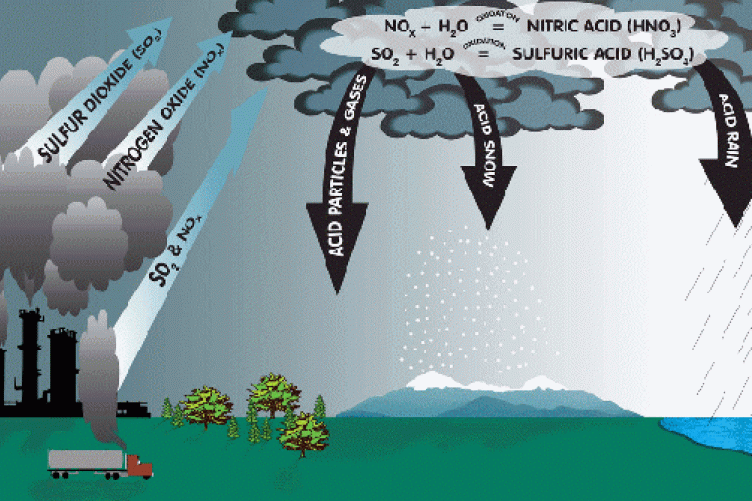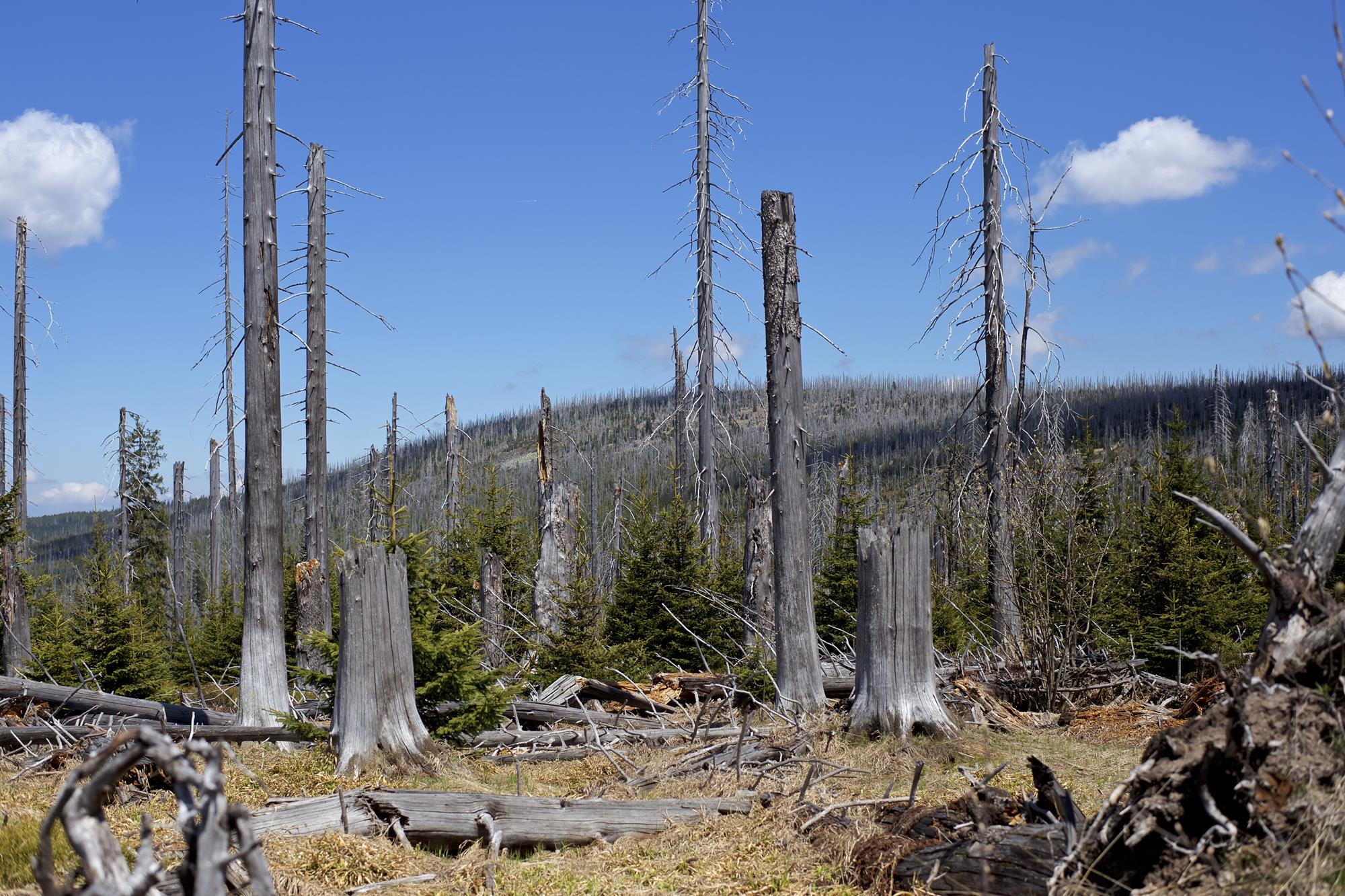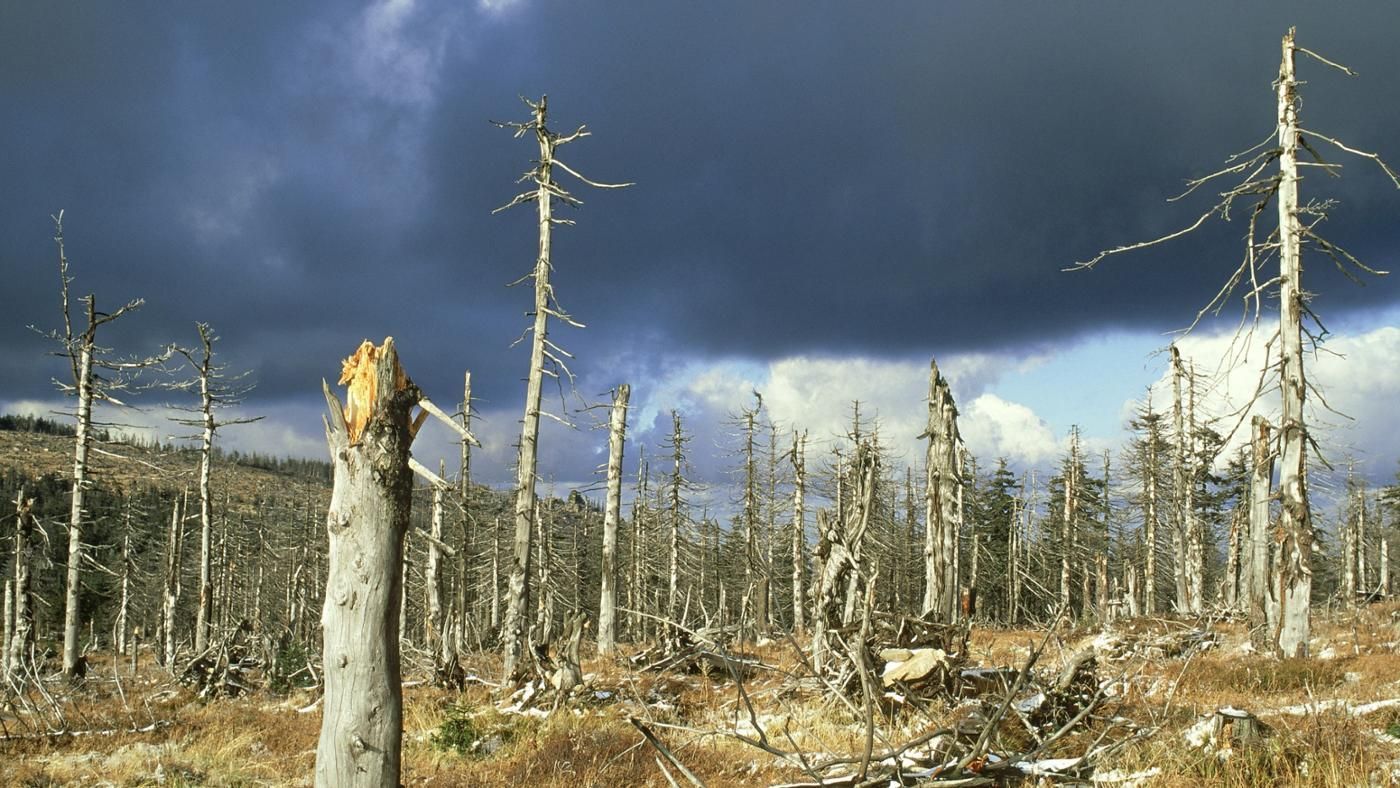
Main navigation
Acid rain is a popular term for the atmospheric deposition of rain, snow, sleet, hail, acidifying gases and particles, as well as acidified fog and cloud water. Dr. Gene E. Likens discovered acid rain in North America when working with colleagues at the Hubbard Brook Experimental Forest in the White Mountains of New Hampshire 18/08/ · In the early to mid ‘80s, scientists observed that many lakes and streams were becoming too acidic to support fish, amphibians, and other aquatic life. On land, acid rain was stripping nutrients from soil and foliage that plants needed to grow. Acid rain also contributed to increased weathering of buildings, statues, and gravestones Acid rain is caused by a chemical reaction that begins when compounds such as sulphur dioxide and oxides of nitrogen are released into the air. These substances can rise very high up into the atmosphere, where they mix and react with water, oxygen, and other chemicals to form more acidic pollutants called acid rain

Breadcrumb
ACID RAIN David M Newbery Department of Applied Economics Cambridge and CEPR (Revised 6 August ) 1. Introduction Air pollution is not a new phenomenon - Estimated Reading Time: 6 mins 18/01/ · The acidity of a lake is determined as much by the acidity of the local soil and vegetation as it is by acid rain. Many lakes in north-eastern America, dead in the s, had plenty of fish in It was surmised by environmentalists that 20th-century sulphur dioxide emissions had choked these lakes to death with acid rain Acid rain research: a review and analysis of methodology Abstract The acidic deposition phenomena, when implicated as a factor potentially responsible for crop and forest yield losses and destruction of aquatic life, has gained increasing attention

What Causes Acid Rain?
18/08/ · In the early to mid ‘80s, scientists observed that many lakes and streams were becoming too acidic to support fish, amphibians, and other aquatic life. On land, acid rain was stripping nutrients from soil and foliage that plants needed to grow. Acid rain also contributed to increased weathering of buildings, statues, and gravestones 03/12/ · Acid rain results when sulfur dioxide (SO 2) and nitrogen oxides (NO X) are emitted into the atmosphere and transported by wind and air currents. The SO 2 and NO X react with water, oxygen and other chemicals to form sulfuric and nitric acids. These then mix with water and other materials before falling to the ground 18/01/ · The acidity of a lake is determined as much by the acidity of the local soil and vegetation as it is by acid rain. Many lakes in north-eastern America, dead in the s, had plenty of fish in It was surmised by environmentalists that 20th-century sulphur dioxide emissions had choked these lakes to death with acid rain

Forms of Acid Deposition
ACID RAIN David M Newbery Department of Applied Economics Cambridge and CEPR (Revised 6 August ) 1. Introduction Air pollution is not a new phenomenon - Estimated Reading Time: 6 mins Acid rain is caused by a chemical reaction that begins when compounds such as sulphur dioxide and oxides of nitrogen are released into the air. These substances can rise very high up into the atmosphere, where they mix and react with water, oxygen, and other chemicals to form more acidic pollutants called acid rain 18/01/ · The acidity of a lake is determined as much by the acidity of the local soil and vegetation as it is by acid rain. Many lakes in north-eastern America, dead in the s, had plenty of fish in It was surmised by environmentalists that 20th-century sulphur dioxide emissions had choked these lakes to death with acid rain

Utility Nav - Header
18/08/ · In the early to mid ‘80s, scientists observed that many lakes and streams were becoming too acidic to support fish, amphibians, and other aquatic life. On land, acid rain was stripping nutrients from soil and foliage that plants needed to grow. Acid rain also contributed to increased weathering of buildings, statues, and gravestones Acid rain is a popular term for the atmospheric deposition of rain, snow, sleet, hail, acidifying gases and particles, as well as acidified fog and cloud water. Dr. Gene E. Likens discovered acid rain in North America when working with colleagues at the Hubbard Brook Experimental Forest in the White Mountains of New Hampshire 02/03/ · Acid rain can dissolve certain more soluble elements from the soil, like aluminum. The dissolved aluminum begins to accumulate and can reach toxic levels as it enters local streams and wetlands. Acid rain also removes important nutrients from the soil, such as calcium, potassium, and magnesium
No comments:
Post a Comment